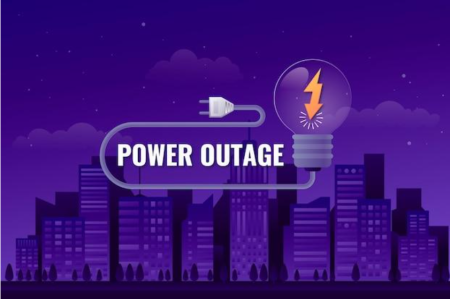In today’s digital age, cybersecurity stands at the forefront of importance and complexity. Despite its paramount significance, many myths and misconceptions persist, even among tech leaders. These misconceptions often lead companies astray, resulting in misguided decisions when formulating their cybersecurity strategies. Welcome to our comprehensive guide on dispelling common cybersecurity myths! In today’s interconnected digital landscape, understanding the truths and falsehoods surrounding cybersecurity is crucial for protecting ourselves and our organizations from potential threats.
From misconceptions about password strength to public Wi-Fi security myths, this blog aims to debunk prevalent cybersecurity myths and provide accurate information to bolster your defenses against cyberattacks. Join us as we unravel the truth behind these misconceptions and empower you with the knowledge needed to navigate the ever-evolving cybersecurity landscape confidently.
The increasing awareness of cybersecurity risks has fueled a substantial demand for cybersecurity professionals. Organizations, recognizing the critical need to safeguard their digital assets, seek skilled individuals to protect against evolving threats. Cyber security course offer vital knowledge and skills necessary to navigate this complex landscape. By enrolling in such courses, individuals gain expertise in threat detection, incident response, and ethical hacking, preparing them to tackle real-world challenges effectively. Moreover, these courses help dispel common myths and misconceptions, ensuring professionals rely on accurate information and best practices. Equipped with practical experience and industry-recognized certifications, cybersecurity professionals can confidently address cybersecurity challenges and contribute to creating a safer digital environment.
Common Cyber Security Myths
Relying solely on strong passwords provides sufficient protection: This myth implies that having a strong, complex password is all one needs to protect their digital assets from cyber threats. However, this overlooks the multitude of attack vectors cybercriminals employ to breach security. While strong passwords are crucial, they are just one layer of defense. Cybercriminals use phishing, social engineering, and brute force attacks to circumvent password protection. Therefore, relying solely on passwords is akin to having a robust front door but leaving the windows open.
All cyberattack vectors are effectively mitigated: This myth suggests that organizations have identified and neutralized all possible avenues of cyberattack, leaving no vulnerabilities. Cybersecurity is a perpetual arms race, with cybercriminals continually evolving their tactics and techniques. New attack vectors emerge regularly; even the most comprehensive security measures may not cover them all. Organizations must adopt a proactive approach, continuously assessing their security posture, monitoring for new threats, and adapting their defenses accordingly.
Well-known cybersecurity risks are adequately addressed: This myth assumes that by focusing on well-known cybersecurity risks like malware, phishing, and ransomware, organizations can effectively protect themselves from cyber threats. However, cybersecurity is not a static landscape; it’s dynamic and ever-changing. Cybercriminals are constantly innovating, developing new attack methods and exploiting emerging vulnerabilities. While addressing known risks is essential, organizations must also remain vigilant and agile, prepared to respond to new and evolving threats as they arise.
Small businesses are immune to cybercriminal attacks: Many small businesses mistakenly believe they are not significant targets for cyber criminals typically due to their size or perceived lack of valuable data. However, this is far from the truth. Small businesses are increasingly targeted by cybercriminals precisely because they often lack the robust cybersecurity defenses of larger organizations. Cybercriminals see small businesses as low-hanging fruit, easier to breach and exploit. Therefore, it’s imperative for small businesses to realise the importance of cyber security while also taking proactive steps to protect themselves from all the major cyber threats.
Security costs too much: The myth that security costs too much overlooks the potential consequences of inadequate cybersecurity measures, which can result in far greater financial losses due to data breaches, legal fees, and reputational damage. While implementing robust security measures may require initial investments, the cost of a cyber attack far outweighs the expense of preventative measures. Moreover, the long-term benefits of protecting sensitive data and maintaining customer trust far exceed the upfront costs. Prioritizing cybersecurity ensures business continuity, safeguards assets, and also mitigates the reputational and financial risks associated with cyber threats in the long run.
Cybersecurity Is Solely IT’s Responsibility: The myth that cybersecurity is solely the responsibility of the IT department overlooks the collaborative effort required to ensure effective cybersecurity measures. While IT plays an important role in implementing technical controls and managing security systems, cybersecurity is a shared responsibility across all levels of a business organization.
Employees must be educated about cybersecurity best practices, including recognizing phishing attempts, using secure passwords, and safeguarding sensitive data. Additionally, executives and management teams must provide support and allocate resources to strengthen cybersecurity initiatives. Building a strong cybersecurity culture requires collaboration and accountability across departments, emphasizing the importance of collective vigilance in protecting against cyber threats and ensuring the resilience of the organization’s digital infrastructure.
My industry remains impervious to cyber threats: This myth suggests that certain industries are inherently immune to cyber threats due to their nature or perceived level of security. However, no industry is immune to cyber threats. Cybercriminals target industries of all types, seeking to exploit vulnerabilities and access valuable data or resources. Whether it’s finance, healthcare, or manufacturing, every industry faces cybersecurity risks. Therefore, organizations across all sectors must prioritize cybersecurity and implement strong security measures for protecting their assets and mitigate cyber threats.
Conclusion
Debunking common cybersecurity myths is crucial for fostering a deeper understanding of the real challenges and threats faced in today’s digital landscape. By dispelling misconceptions, individuals and organizations can better prepare to navigate the ever-evolving cybersecurity landscape effectively. Enrolling in a cyber security course provides valuable knowledge and skills beyond myths, offering practical insights into identifying and mitigating genuine cyber threats. Individuals can enhance their cybersecurity awareness and resilience by focusing on real concerns and adopting proactive security measures, ultimately contributing to a safer and more secure digital environment for all.













